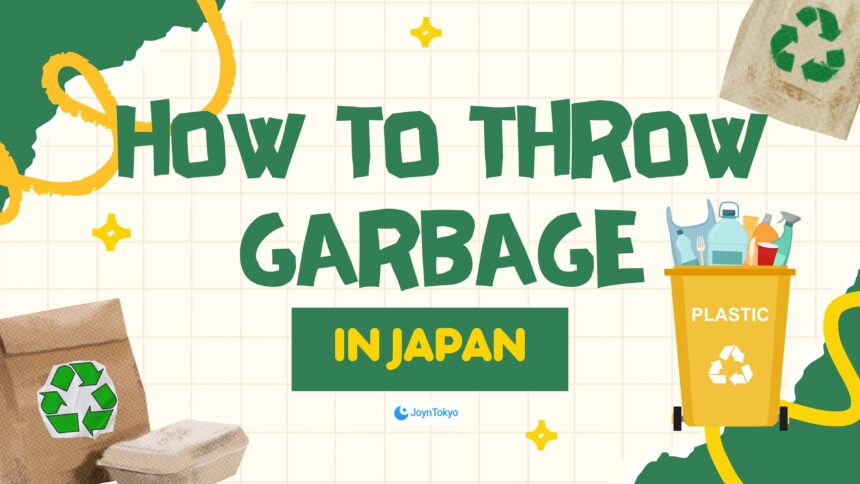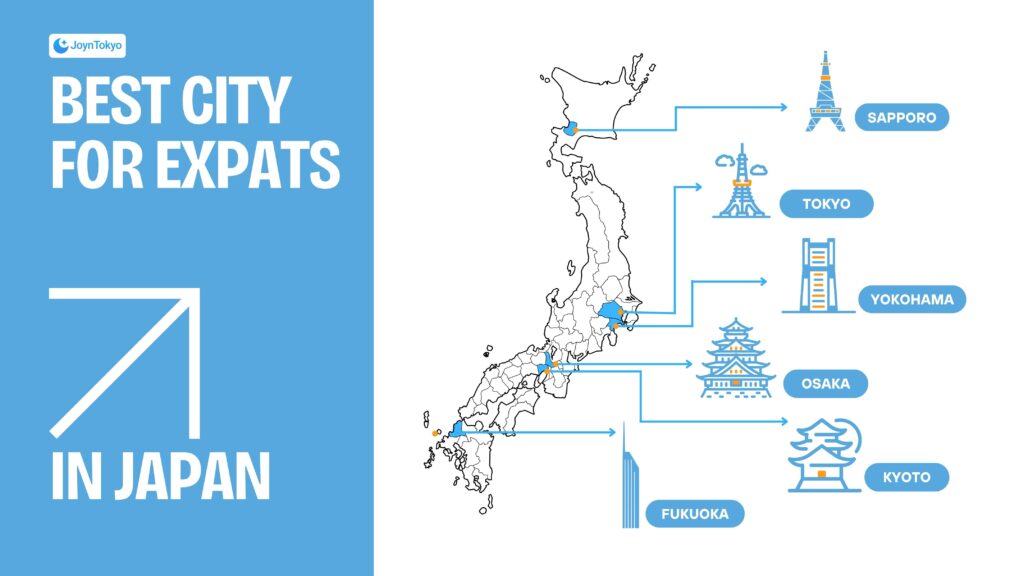Understanding the ins and outs of Japan’s trash and recycling system can feel daunting for newcomers. Japan’s emphasis on sustainability, organized waste management, and community cooperation makes it one of the most structured systems in the world. By familiarizing yourself with the core categories, schedules, and disposal rules, you can adapt smoothly to life in Japan while contributing to a cleaner environment.
Why the Japan Trash System Stands Out
Japan’s waste management culture goes beyond keeping streets clean. It is deeply tied to environmental responsibility and community cohesion. Municipalities across the country encourage residents to take part in comprehensive sorting, a practice that might seem complicated at first but soon becomes second nature.
Core Categories of the Japan Trash System
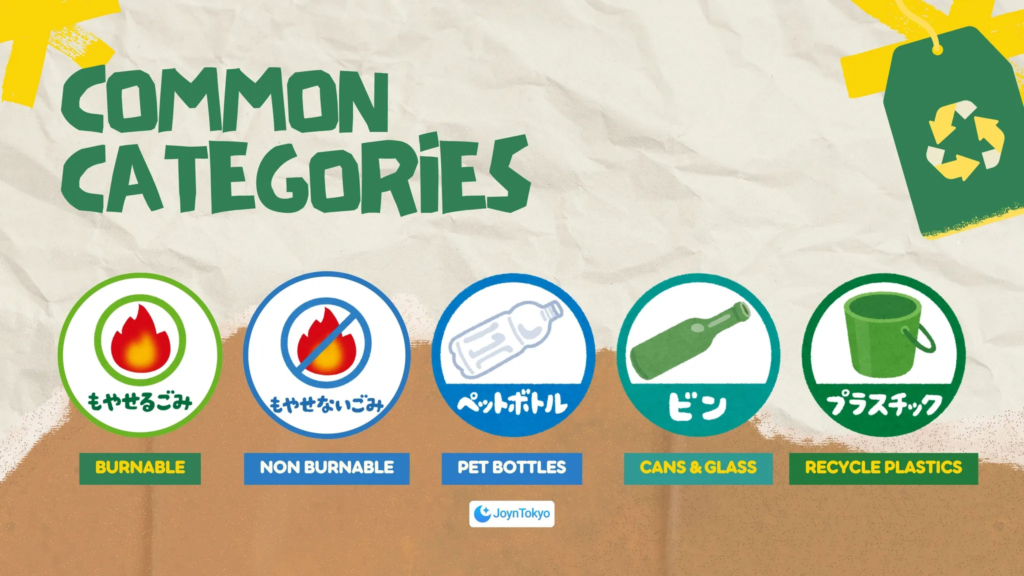
Most municipalities divide household waste into several categories, though the exact names and rules differ from place to place. The main groups include burnable waste such as kitchen scraps and paper, non-burnables like ceramics or small metal items, recyclable plastics labeled with the “プラ” symbol, PET bottles, cans, and glass bottles. Some areas add special categories for cartons, batteries, or electronics. Because rules vary, residents are encouraged to check local guides, but the overall structure of the Japan trash system remains consistent across the country.
Depending on your municipality, these categories may vary slightly, so always check local guidelines.
Community Accountability in Waste Management
Residents are expected to follow the rules meticulously. When trash is incorrectly sorted — like mixing plastics with burnable waste — the bag may be left behind with a notice explaining proper sorting. Over time, strict adherence to these guidelines results in higher recycling rates and reduced landfill waste, benefiting the entire community.
How the Japan Trash System Works in Daily Life
Each city or ward sets its own collection schedule, so burnable waste may be collected twice a week while recyclables are picked up on a different day. Trash must be placed outside early in the morning, often in designated colored bags purchased at local stores. Some municipalities require strict bag colors, while others allow transparent bags, but the principle remains the same—follow the rules carefully, or risk your trash being left behind. Once you learn your neighborhood’s schedule, the Japan trash system fits smoothly into your weekly routine.
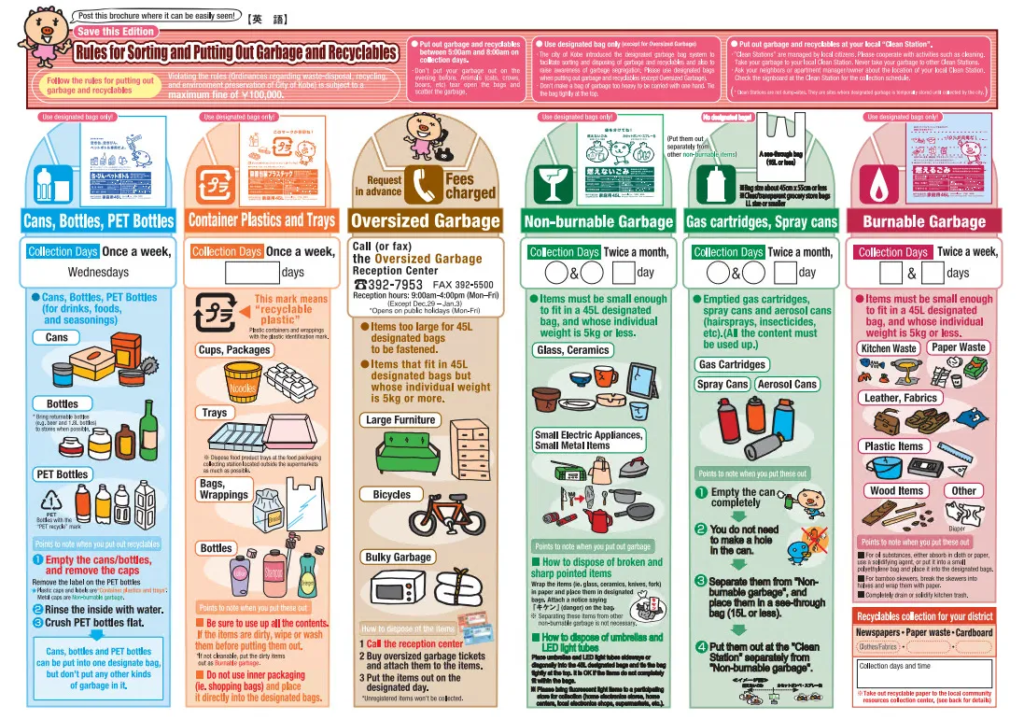
Sorting and Disposal Guidelines
Burnable waste is the easiest to manage since it includes most everyday household items. Non-burnables require more attention and usually have fewer collection days, so families tend to accumulate items like broken pans or ceramics until the scheduled pickup. Recyclables are heavily emphasized: PET bottles must be rinsed, labels removed, and caps placed separately, while cans and glass also need to be cleaned. Oversized waste (sodai gomi) requires a separate process that involves booking in advance and paying a disposal fee. The detail might feel excessive at first, but it ensures that the Japan trash system operates with impressive efficiency.
Burnable Waste
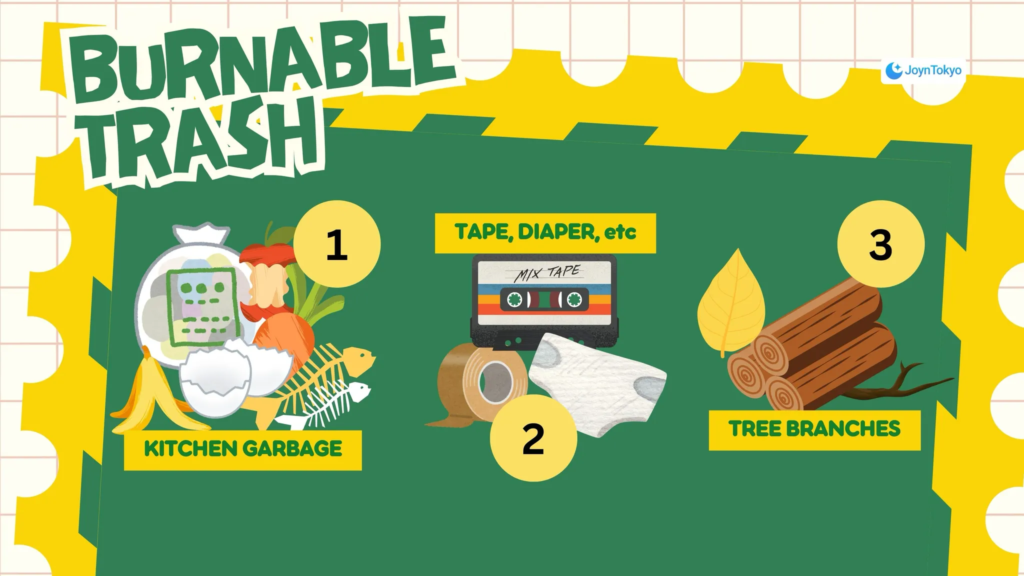
Burnable waste makes up the bulk of daily household trash in the Japan trash system. This category includes kitchen scraps, leftover food, paper, tissues, and other combustible items. Because this waste decomposes quickly, collection is frequent—often twice a week in most municipalities. Residents are expected to place burnable items in designated bags, which are usually purchased at supermarkets or convenience stores. If the wrong items are mixed in, such as plastics or metals, the collection workers may refuse to pick up the bag. Over time, you learn that keeping a small food waste bin in the kitchen makes sorting burnables easier and helps you stay in sync with the pickup schedule.
Non-Burnable Waste
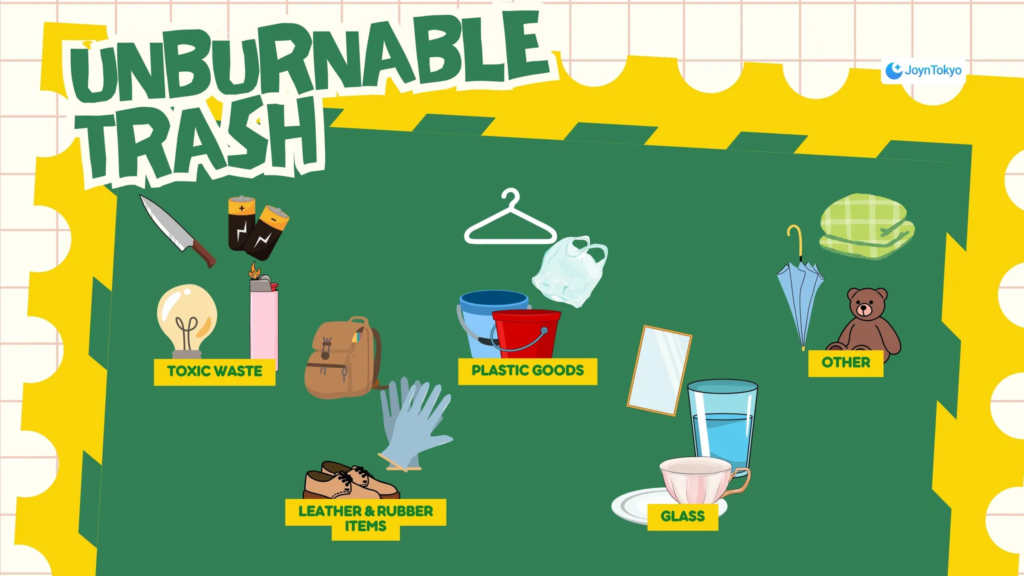
Non-burnable waste covers a wide range of household items that cannot be incinerated safely. This category usually includes small metal objects, ceramics, glass, and plastics that do not qualify as recyclable. Collection days for non-burnables are less frequent, sometimes only once or twice a month, so planning ahead is important. Many newcomers to Japan find this category challenging because it is less intuitive than burnables. Mistakes, such as putting a broken mug into the wrong bag, can result in your trash being left behind with a warning note. The Japan trash system encourages households to pay attention to these details, ensuring items are handled in the safest and most environmentally responsible way.
Recyclable Items
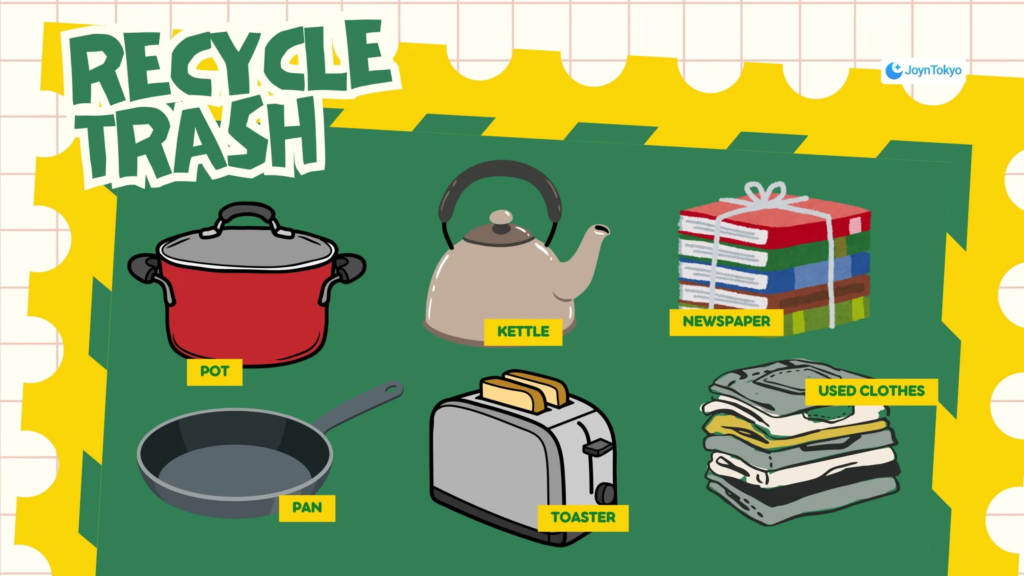
Recyclables are at the heart of the Japan trash system, and they are divided into several subcategories. Plastics labeled with the “プラ” symbol must be rinsed before disposal, while cans and glass bottles should also be washed and dried. PET bottles have their own rules—labels need to be peeled off and caps collected separately. This level of sorting might feel tedious at first, but it greatly improves the efficiency of recycling facilities. Many municipalities publish detailed guides or even provide smartphone apps that help residents identify the right category for each item. Once you establish the habit of rinsing and separating, recycling in Japan becomes second nature and contributes directly to the country’s high recycling rates.
Oversize Waste
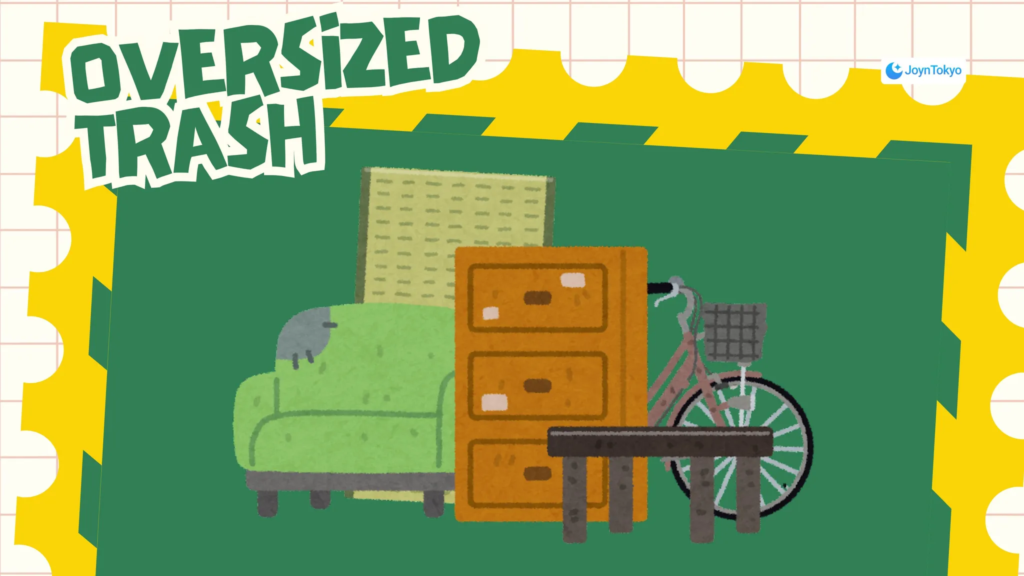
Oversized items, known as sodai gomi, are treated differently from regular trash in Japan. This category includes furniture, mattresses, bicycles, and large electronics—basically anything too big for normal collection bags. To dispose of oversized waste, residents usually need to purchase a special sticker and book a pickup through the local ward or city office. There is also a disposal fee, which varies depending on the item’s size and type. Because the process requires extra steps, newcomers sometimes overlook this until they have a large item they cannot simply leave outside. By following the rules for sodai gomi, you ensure that bulky or hazardous items are handled properly, keeping the Japan trash system efficient and safe for the community.
Importance of Bag Color and Labeling
Some municipalities require specific colored bags for each waste type. Others allow transparent or semi-transparent bags. Verify your local rules: using the wrong bag can lead to uncollected trash.

Scheduling and Time Frames
Collection typically occurs in the early morning. Many residents put out their trash either late on the night beforeor early on the morning of collection day. Punctuality helps keep neighborhoods tidy and pest-free.
Navigating Challenges for Foreign Residents
Adapting to Japan’s detailed system can be overwhelming at first, especially if you are unfamiliar with the language or municipal variations. With the right tools and resources, you can build confidence in sorting and disposal methods.
Overcoming Language Barriers
Many city or ward offices publish multilingual guides, and some smartphone apps can scan barcodes to show the correct sorting category. These significantly ease the process for newcomers.
Handling Large or Unconventional Items (Sodai Gomi)
Oversized waste (“sodai gomi”) often requires purchasing special stickers and scheduling pickup. Check your local ward or city office website—many offer English information. Batteries, electronics, and used cooking oil may also have separate rules. For instance, small electronics could require drop-off at designated bins in electronics stores, and cooking oil may need solidifying before disposal.
Encouraging Community Involvement
Some neighborhoods host volunteer clean-up events, giving residents—foreigners included—a chance to learn about waste management firsthand and build relationships with neighbors.
Moving Forward with Confidence
Successfully navigating Japan’s trash system not only helps you adapt to local life but also fosters a greener community. Though the rules may seem strict, they reflect a country-wide commitment to sustainability.
Acquiring Additional Resources
- Local Municipal Office: Look for English pamphlets or websites detailing pickup days and sorting guidelines.
- Online Communities: Expat forums and social media groups often share tips tailored to specific neighborhoods.
- Language Assistance: Some regions have hotlines for foreign-language support concerning sorting categories or special disposal procedures.
Staying Up to Date with Changes
Collection schedules and recycling categories can change occasionally. Keep an eye on official bulletins or websites to ensure you’re following the latest rules.
Building Sustainable Habits
Once you grasp the fundamentals, sorting in Japan becomes second nature. It can also inspire more conscious consumption habits that benefit both you and the environment.
Final Reflections on Trash and Recycling in Japan
Understanding Japan’s trash and recycling practices is a significant step in integrating into daily life. Although details vary by municipality, the underlying principle of community-minded sustainability remains constant. By learning the categories, following the schedules, and staying aware of updates, you’ll quickly gain confidence in managing waste responsibly. Over time, these habits become part of your routine, reflecting Japan’s commitment to cleanliness and resourcefulness—and helping you contribute positively to your neighborhood and beyond.


